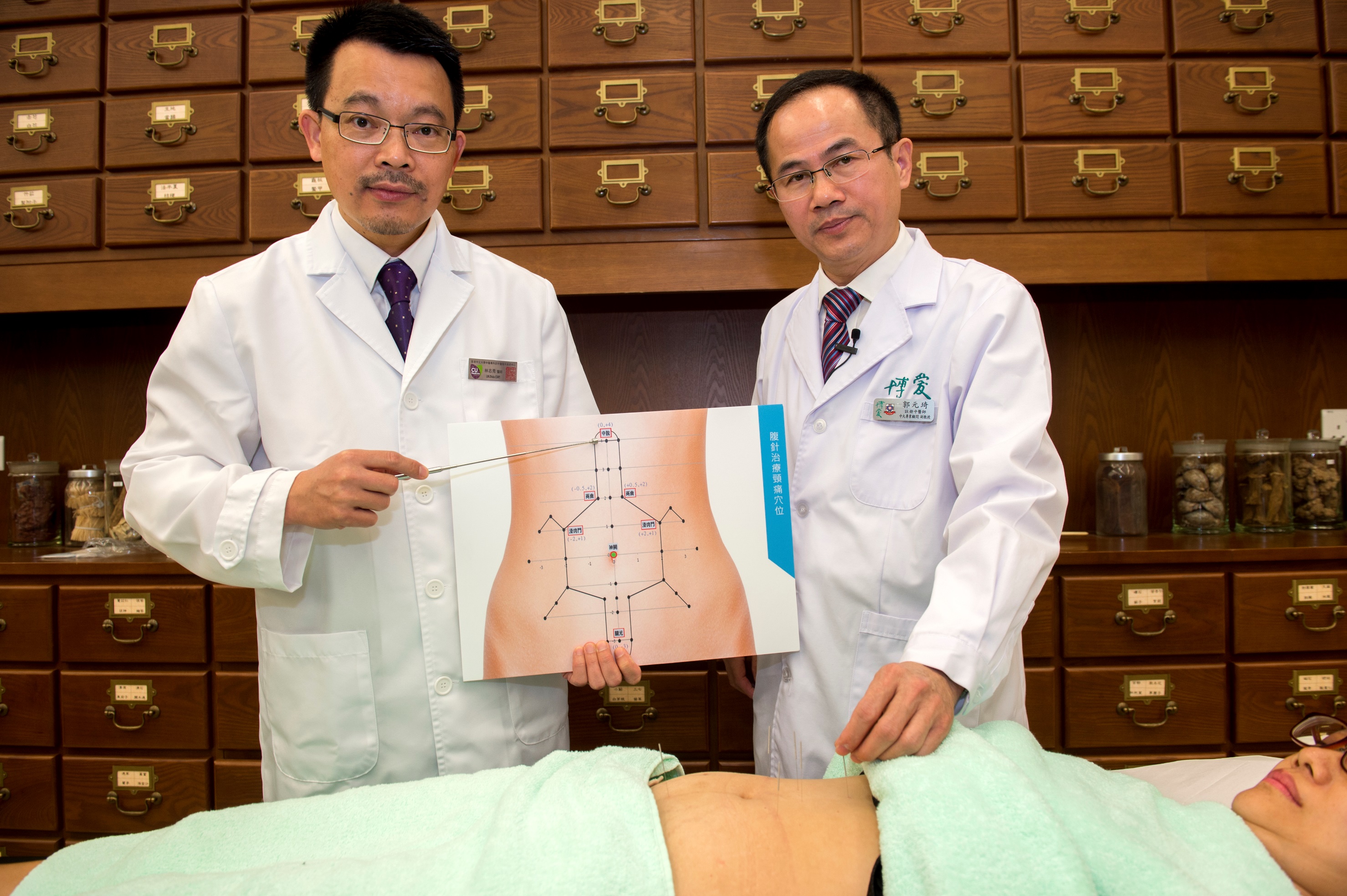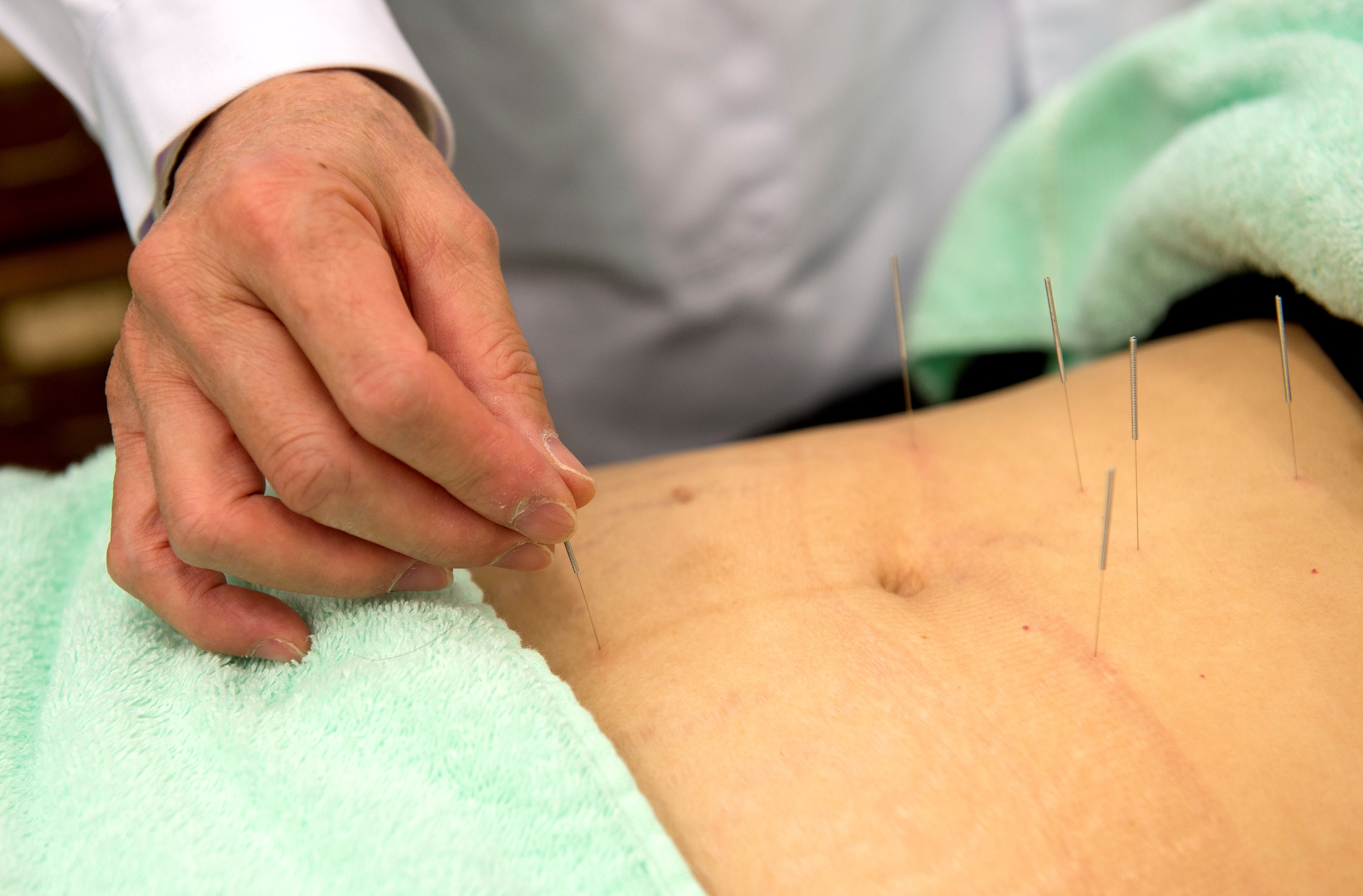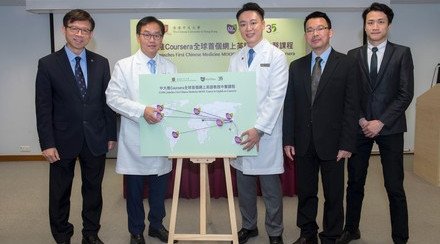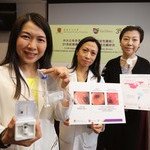CUHK and Pok Oi Hospital Clinical Study Finds Abdominal Acupuncture Effective for Treating Neck Pain
The School of Chinese Medicine of the Faculty of Medicine at The Chinese University of Hong Kong (CUHK) joined hands with Chinese Medicine Services of Pok Oi Hospital and conducted a clinical study to investigate the efficacy of abdominal acupuncture for treating neck pain. The team invited 154 participants who were suffering from neck pain and randomly assigned them to receive ‘abdominal acupuncture’ or non-penetrating ‘sham acupuncture’. After 6 treatment sessions in two weeks, preliminary results suggested that this non-conventional method is competent to relieve neck pain and can improve the neck’s range of motion. Also, its effect continued for 12 weeks after the last treatment. The outcome shows that ‘abdominal acupuncture’ is efficacious and has prolonged effect in relieving neck pain, and improves patients’ quality of life. The team’s work has been published in the international scientific journal PLOS ONE.
Abdominal acupuncture is safe, painless or only generates mild pain
Neck pain is a common health problem, mainly caused by prolonged muscle stress derived from inappropriate working postures, poor blood circulation, and lack of exercise. Disc herniation, osteoarthritis, or acute injury (such as from a car accident or exercise) can also be the cause. The increase of smartphone usage in recent years has caused so-called ‘text neck’.
Abdominal acupuncture is a non-conventional approach introduced for clinical practice over 20 years ago. It is a system of healing that utilises the abdomen to regulate the function of the zangfu organ (臟腑) to treat the whole body. Practitioners can choose between the ‘abdominal approach’ and the ‘conventional approach’ in accordance with the patients’ profile. Abdominal acupuncture has a lower risk as the acupuncture points are on the abdomen instead of the neck. Abdominal acupuncture also generates less or no pain.
Prof. Yuanqi GUO, Chief of Chinese Medicine Services, Pok Oi Hospital ─ The Chinese University of Hong Kong Chinese Medicine Centre for Training and Research (Shatin) stated, ‘Neck pain is a common but challenging health problem. There are many ways to treat it. The approach suggested in this study selects specific acupuncture points scattered over the abdomen to regulate the zangfu function and meridian system. Most people are suited to abdominal acupuncture because it’s safe, painless or generates only mild pain. However, pregnant women, patients with blood clotting disorders, abdominal pain or skin scratches and itchy skin on the stomach are not suited to this approach.’
Clinical study provides scientific proof for the effectiveness of abdominal acupuncture
In order to discuss the efficacy of abdominal acupuncture in clinical practice, the School of Chinese Medicine of the Faculty of Medicine at CUHK and Chinese Medicine Services of Pok Oi Hospital collaborated in a clinical controlled trial, in order to give objective evidence which carries clinical value.
The research was conducted between November 2014 and March 2016, with a total of 154 participants aged 20 to 62 who were suffering from neck pain. They were randomly assigned to receive ‘abdominal acupuncture’ or non-penetrating ‘sham acupuncture’ (the control group). Each participant was administered treatment over six sessions. Each session lasted for 30 minutes. There were 3 a week, and they were finished within two weeks. All treatments were conducted at the Pok Oi Hospital ─ The Chinese University of Hong Kong Chinese Medicine Centre for Training and Research (Shatin). The standard protocol for ‘abdominal acupuncture’ included these acupuncture points: ‘Zhong wan’(中脘), ‘Shang qu’(商曲), ‘Hua rou men’(滑肉門) and ‘Guanyuan’(關元).
Northwick Park Neck Pain Questionnaire (NPQ), Visual Analog Scale (VAS) and Short Form 36v2 (SF-36v2) Health Survey were the three tools used to evaluate the treatment outcomes. Patients from both groups were accessed before treatment, right after the last treatment, and also 4 weeks after treatment ends. For the abdominal group, they were further accessed randomly at 12 weeks after treatment ends to understand if the approach carried continuous effectiveness.
| Abdominal group | Sham group | |||
| Before treatment | After treatment | Before treatment | After treatment | |
| Northwick Park Neck Pain Questionnaire (NPQ) [Evaluates the degree of pain and neck moving function] | 41.30 | 29.65 (difference 11.65) | 40.95 | 35.05 (difference 5.9) |
| Visual analog scale (VAS) [Evaluates the degree of pain] | 6.42 | 3.84 (difference 2.58) | 6.07 | 5.28 (difference 0.79) |
Evaluation results showed the ‘abdominal group’ voiced a greater improvement in both NPQ and VAS scores than the ‘sham group’ and data proved the non-conventional acupuncture still carried effect to patients 12 weeks after treatment. The results of SF-36v2, a survey that monitors 8 physiological and psychological indicators, also showed improvement in patients’ quality of life. During the trial, 924 sessions of abdominal acupuncture were conducted and no major adverse events occurred.
Prof. Zhi Xiu LIN, Acting Director and Associate Professor, School of Chinese Medicine, Faculty of Medicine, CUHK concluded, ‘This clinical trial studying and comparing the efficacy between abdominal and sham acupuncture for treating neck pain suggested that the former one outperformed its rival in improving the functional performance and health-related quality of life, and providing pain relief. We are delighted to have had the opportunity of cooperating with Chinese Medicine Services of Pok Oi Hospital and exchanging research skills and clinical experiences to build this randomised controlled trial. We are planning for more studies of this kind of integrated approach between institution and local health organisations, to generate and provide more objective scientific data and analysis, which will advocate the standardisation of Chinese medicine and promote the industry.’

The School of Chinese Medicine of the Faculty of Medicine at CUHK join hands with Chinese Medicine Services of Pok Oi Hospital and conducted a clinical study to investigate the efficacy of abdominal acupuncture for treating neck pain. Prof. Zhi Xiu LIN (left), Acting Director, School of Chinese Medicine, Faculty of Medicine, CUHK and Prof. Yuanqi GUO (right), Chief of Chinese Medicine Services, Pok Oi Hospital ─ The Chinese University of Hong Kong Chinese Medicine Centre for Training and Research (Shatin).

The study uses a standard protocol for treatment, including acupuncture points: ‘Zhong wan’(中脘), ‘Shang qu’(商曲), ‘Hua rou men’(滑肉門) and ‘Guanyuan’(關元).

Miss YIM has been suffering from neck pain since 8 years ago. She has tried taking pain killers and changing pillows for relief but effect was not satisfactory. First tried abdominal acupuncture in 2015, she said the treatment was easy to accept compared to other acupuncture methods. She felt no pain during the procedure and the pain was reduced after treatment.







